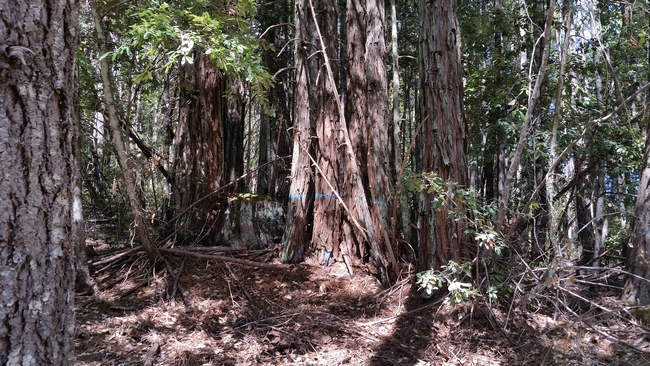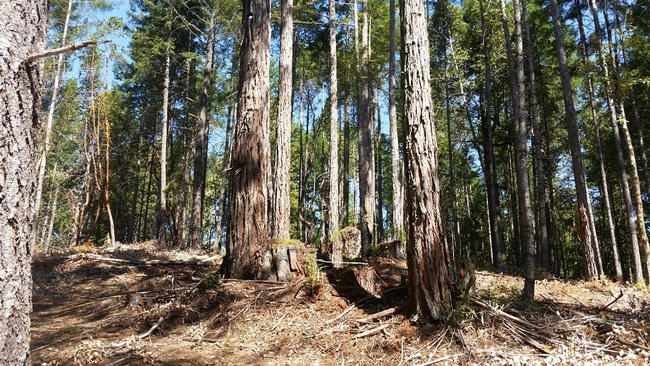Before he became the director of forest policy for a timber company, John Andersen was working next door to one. During his time as a consulting forester, several family forests Andersen visited were adjacent to parcels of industrial forestland that had undergone upsetting changes. “I saw what used to be conifer forests essentially transformed into tan oak forests,” Andersen noted. When the Mendocino Redwood Company (MRC) was created in 1998 through the purchase of another industry's forestland, they set out to operate differently.
MRC would be a timber company that prioritized operating sustainably, which interested Andersen. “It was refreshing to see a company that would treat the land right,” he shared. Now, Andersen is the Director of Forest Policy for MRC and the later-established Humboldt Redwood Company (HRC) and an employee for 25 years.
MRC and HRC Business Principles
Within California, over 5.7 million acres of forestland are owned at the family or individual level. It seems fitting that as a family business at heart, MRC/HRC, is guided by similar stewardship principles. “Our family-owned businesses,” Andersen noted, “want to hand the forest down to future generations in a better condition than when the forestlands were purchased.”
“The intention was there from the start,” Andersen explains, with the company working towards goals that would foster forest health and positive community relations.
Policies that have resonated well with community members include commitments to retain old growth trees, restore wildlife habitat, and carefully monitor streams. Forest landowners can also sell their timber to MRC and HRC, as both companies house log buyers which connect with local landowners looking to offset the cost of management projects.
Adapting to Wildfire Risk
The future of timber companies in California is indelibly shaped by the threat of wildfire. For Andersen, the risk became clear in 2020, when the CZU Lightning Complex fires burned nearly 90,000 acres of Santa Cruz forestland. “It's getting to the point where catastrophic wildfires are happening in the redwood region,” Andersen stated. As a result, both MRC and HRC prepared fire risk analyses for their lands.
Andersen shared that while the risk level for company forestland may not be high compared to other portions of the state, the analyses help guide company decision making when locating fuel reduction projects. Both MRC and HRC became more proactive with fuel reduction efforts, including getting involved in prescribed fire projects.
Andersen's position is at the intersection of forestry and policy, a space where he has seen shifts in how legislators respond to wildfire risk. “I don't want to ride the coattails of disaster,” Andersen said, “but it seems like that's what changes minds.” He explains that there is now more support for funding fuels reduction efforts. When legislators visit MRC and HRC forestland, Andersen sees firsthand how quick they understand the urgency to develop fire resilient forests.
Public Information
Information sharing is integral to MRC and HRC, and not just for policymakers. Community members have an open invitation to tour company forestland and make inquiries about forest management practices. “Transparency is important, because the public sees our forestland all the time,” Andersen explained. This encompasses a wealth of information available on the company's website, including forest management plans, watershed analysis reports, and habitat conservation reports.
From Andersen's perspective, both MRC and HRC receiving their Forest Stewardship Council® (FSC® C031337) certification was a big step forward. Independent assessments like this provide MRC and HRC the opportunity to demonstrate their commitment to forest stewardship and sustainability each time a customer buys their lumber. “It's well and fine for us to say we are doing a good job,” Andersen explained, “but it's also important to have third party input to verify we are managing our forests to high standards.”
Looking to the Future
Proactivity on the part of industry is essential to the future health of California's forests. “I want to see the day where we can say our forests are in a fire and drought resilient condition,” Andersen shared. “Then, if there is a fire, we aren't as concerned with the effects.”


